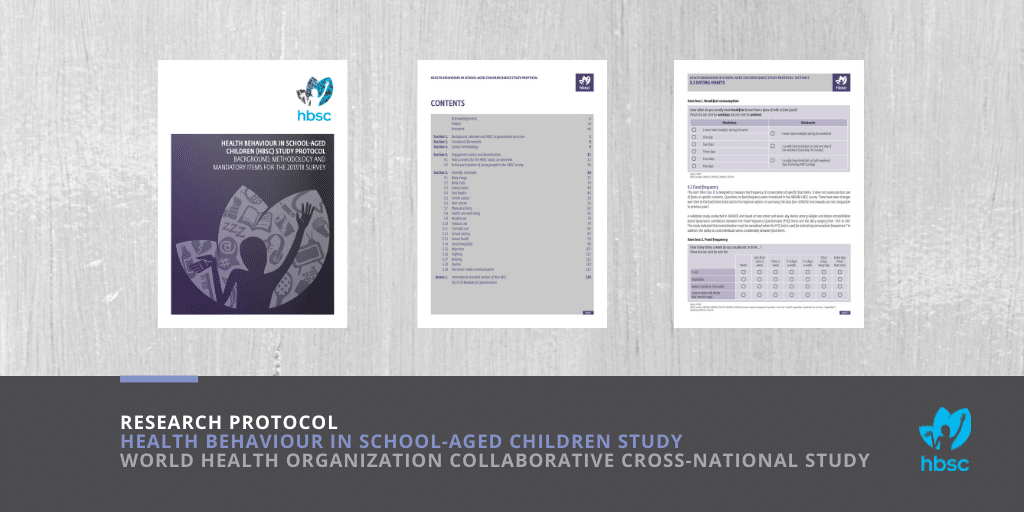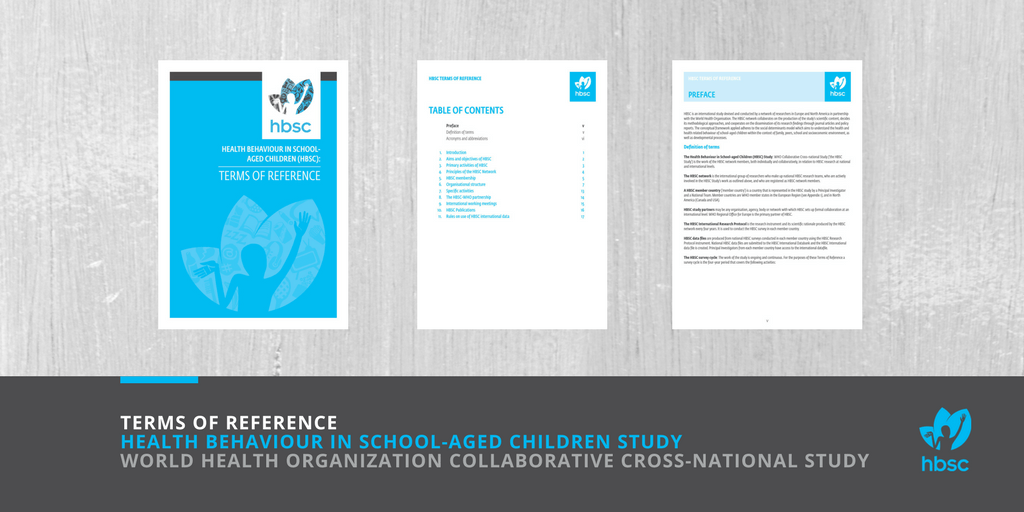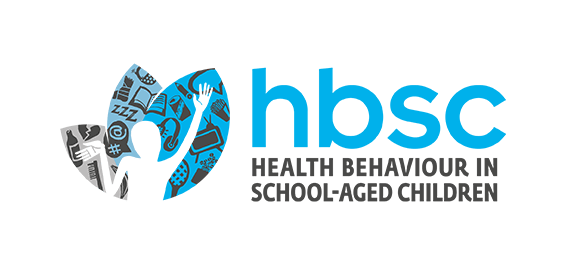About
The Health Behaviour in School-aged Children (HBSC) study is a unique cross-national research study into the health and well-being of adolescents across Europe and North America, conducted in collaboration with the World Health Organization (WHO) Regional Office for Europe.
Initiated in 1982 by researchers from England, Finland, and Norway, HBSC was one of the first cross-national studies to focus specifically on adolescents. The first study was undertaken in 1983/84, and since 1985/86 HBSC has been conducting surveys of young people every four years, with an increasing number of countries participating in each survey cycle. It provides a vital resource to compare the health and well-being of adolescents between countries and over time.
The study is organised and developed by a network of HBSC national teams that include researchers based in a variety of academic and public health institutions.
Data are collected in all participating countries through school-based surveys using a standard methodology detailed in the HBSC international study protocol, ensuring that the sample is representative of all in the age range.
HBSC data are used at national/regional and international levels to gain new insights into adolescent health and well-being, understand the social determinants of health and inform policy and practice to improve young people’s lives.
Our work
Aims and objectives
The HBSC study aims to gain new insight into, and increase understanding of, adolescent health and well-being in their social context. The main objectives of the study are to:
- initiate and sustain national and international research on health and well-being, health behaviour and the social context of health in adolescents;
- contribute to theoretical, conceptual and methodological development in the area of adolescent health;
- collect relevant data and monitor adolescent health and well-being in member countries;
- contribute to the global knowledge base on adolescent health, with particular focus on health and well-being, health behaviour and the social context of health;
- disseminate findings to relevant audiences, including researchers, policy-makers, health promotion practitioners, teachers, parents and young people;
- link to WHO strategic objectives for child and adolescent health;
- inform and support the development of health promotion programmes and interventions with school-aged children;
- build national capacity and expertise on adolescent health and well-being, health behaviour and the social determinants of health; and
- establish and strengthen an international network of experts in the field of adolescent health.
Our research approach
The HBSC study looks at adolescent health-related behaviours as part of young people’s broader lifestyle, viewing health in its social context. Both the wider society and the social worlds that adolescents inhabit are considered important influences on their behaviour, such that health and well-being are seen as the outcomes of the complex interplay between individual and environmental factors.
The survey design and content has always acknowledged that how young people feel is an important aspect of their health and it is essential that their voices and experiences are captured and shared with key decision-makers at local, national and international levels. As experts on their own lives, the data provide a valid representation of their health and well-being, perspectives and experiences.
World Health Organization collaboration
The World Health Organization (WHO) Regional Office for Europe is the primary partner of HBSC and has been since 1983.
HBSC and WHO work together to improve understanding of adolescent health and ensure high-quality data are used to develop policies and programmes that protect and promote young people’s health and well-being.
Register for a copy of our latest research protocol
The 2017/18 HBSC research protocol contains scientific rationales for the survey items, the standard international questionnaire and technical appendices on data collection and management.

What do we study?
Behaviours established during adolescence can continue into adulthood, affecting issues such as mental health, the development of health complaints, tobacco use, diet, physical activity levels, and alcohol use. HBSC focuses on understanding young people’s health in their social context – where they live, at school, with family and friends. Researchers in the HBSC network are interested in understanding how these factors, individually and together, influence young people’s health as they move from childhood into young adulthood.
The international network is organized around an interlinked series of focus and topic groups related to the following areas:
- Birth-registered sex, gender identity and sexual orientation
- Chronic conditions
- Eating and dieting
- Electronic media communication
- Environmental health literacy and planetary health
- Family culture
- Health literacy
- Mental health and well-being
- Migration
- Peer culture and leisure time
- Physical activity
- Puberty
- Risk behaviours
- School experience
- Sexual health
- Social inequality
- Spiritual health
- Violence and injury prevention
Why adolescence?
The adolescent years are a critical transitional period within the life course during which rapid physical, emotional, cognitive, and social development occurs. These years mark a period of increased autonomy during which health-related behaviours develop and independent decision-making may influence their current and future health.
Behaviours established during this transition period can continue into adulthood, affecting issues such as mental health, substance use, physical activity levels and diet, and longer-term health outcomes. Exposure to alcohol or tobacco use, physical inactivity, unprotected sex or violence, presents risks not only to adolescents’ current health and well-being but also their future health.
The adolescent years, therefore, provide a critical opportunity for prevention and intervention to support young people’s healthy growth and development, promote future health and well-being in adulthood, and, as such, underpin the health of the next generation.
Who funds the HBSC study?
HBSC involves a wide network of researchers from all participating countries. The study is funded at the national level in each of its member countries.
How are data collected?
The international standard questionnaire produced for every survey cycle enables the collection of common data across all participating countries. Thus, it allows quantification of patterns of key health behaviours, health indicators and contextual variables. These data enable cross-national comparisons to be made, and with successive surveys, trend data is gathered and may be examined at national and cross-national levels.
Data are collected in all participating countries and regions through school-based surveys using a standard methodology detailed in the HBSC international study protocol. Each country or region uses cluster sampling to select a proportion of young people aged 11, 13 and 15, ensuring that the sample is representative of all in the age range. Around 1500 students in each HBSC country or region are selected from each age group. A total of 279,117 young people took part in the 2021/22 survey.
TERMS OF REFERENCE
The HBSC Terms of Reference describes the research network’s aims, organisational structure, and operational procedures.

